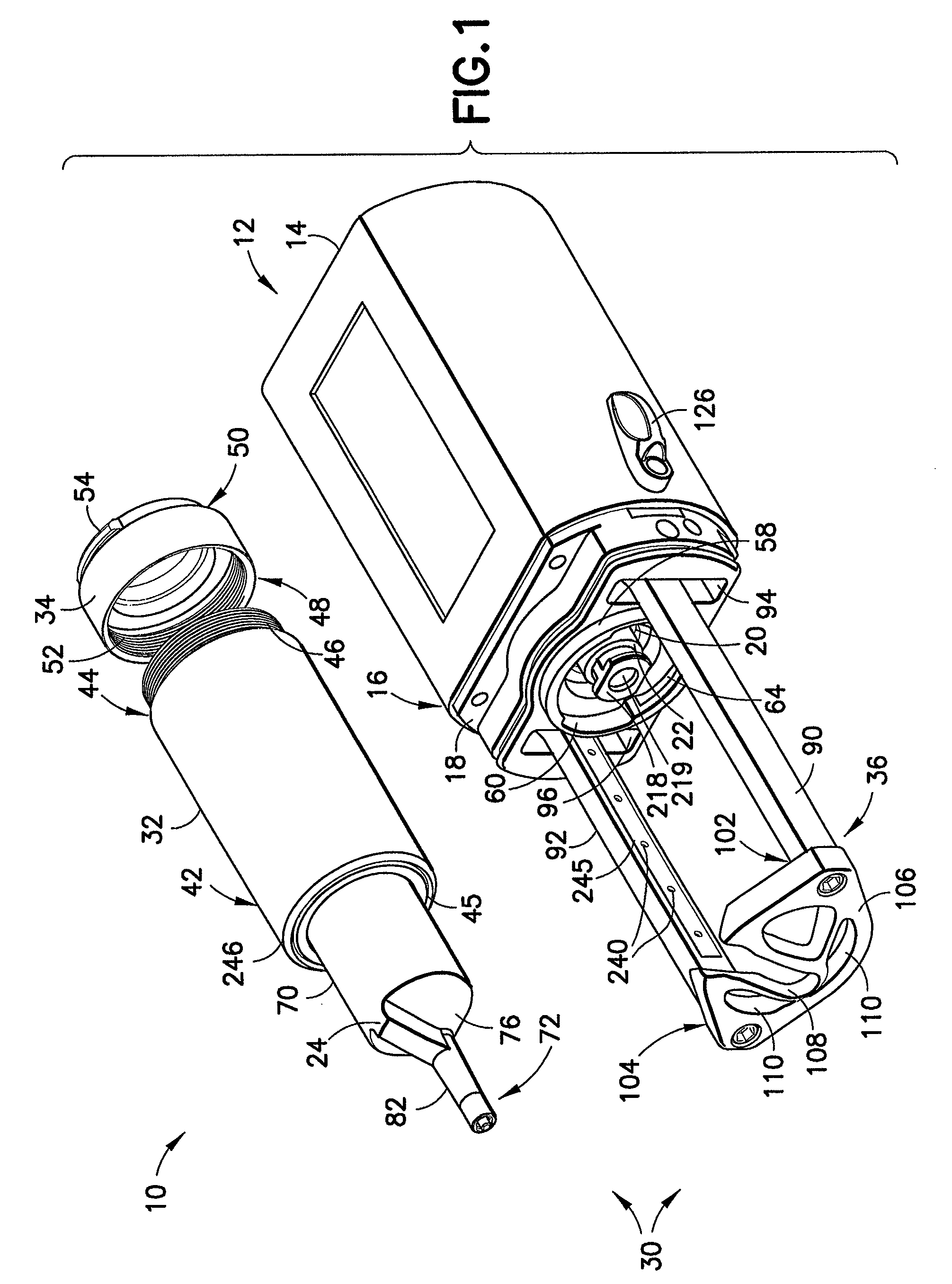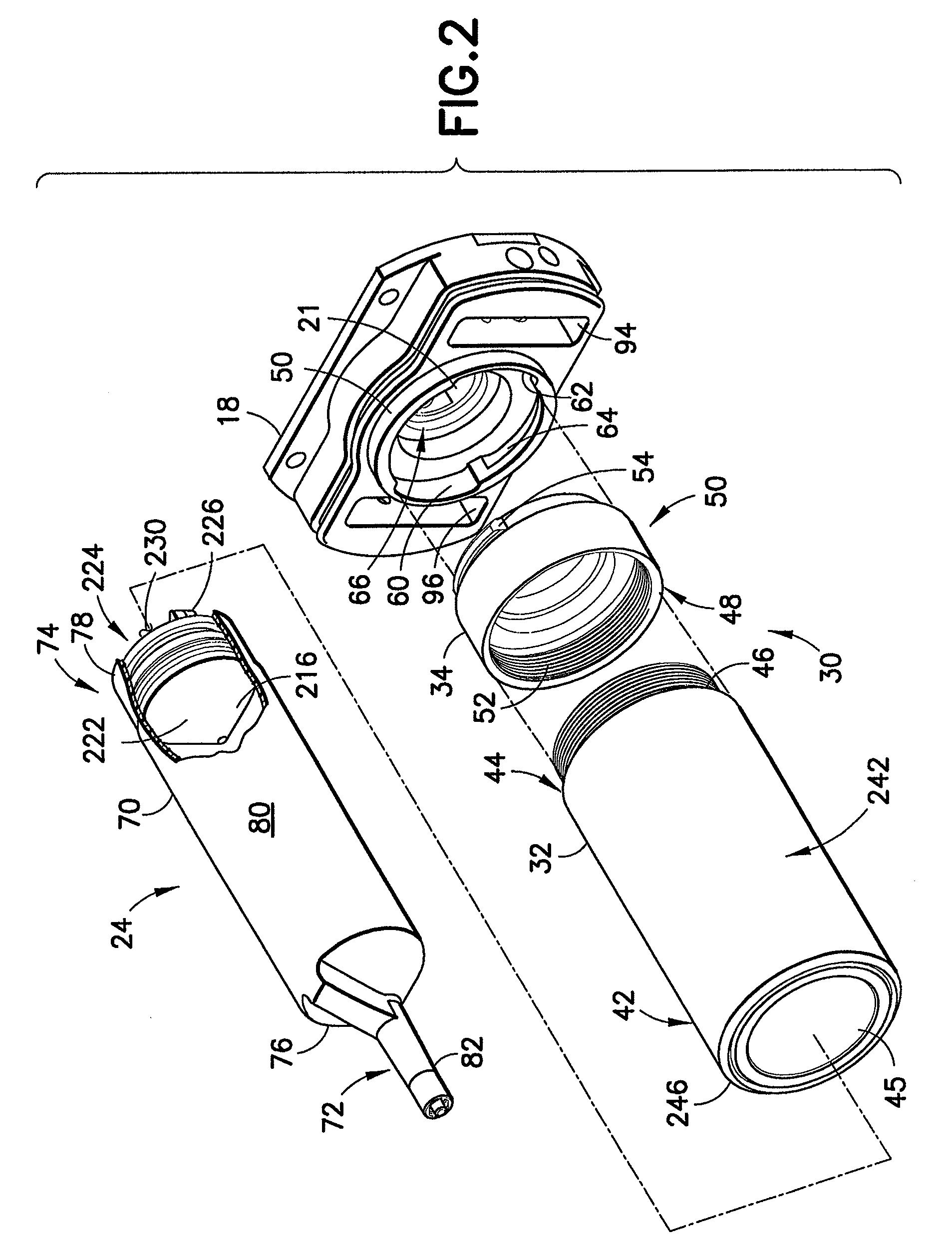Fluid injection apparatus having a syringe presence sensor
a technology of presence sensor and injection apparatus, which is applied in the field of pressure jacket systems, can solve the problems of bursting or leakage of pressurized fluid around the seal, potentially unsafe or hazardous conditions, and patient tubing typically having to be disconnected from the syringe, and achieve the effect of reducing the thickness of the wall
- Summary
- Abstract
- Description
- Claims
- Application Information
AI Technical Summary
Benefits of technology
Problems solved by technology
Method used
Image
Examples
Embodiment Construction
[0102]FIG. 1 shows a fluid injection apparatus 10 in accordance with the present invention. The fluid injection apparatus 10 includes an injector head 12, which may be supported on a support structure (not shown). The injector head 12 includes an injector housing 14 having a front end 16. A faceplate 18 is attached to the front end 16 of the injector housing 14 and encloses the front end 16 of the injector housing 14. The faceplate 18 may be secured to the front end 16 of the injector housing 14 by conventional means (i.e., mechanical fasteners and the like) or be integrally formed with the injector housing 14.
[0103]Referring to FIGS. 1-4, the injector housing 14 has a central opening 20 aligned with a central passage 21 defined by the faceplate 18 and through which an injector drive piston 22 of the injector head 12 is extendable and retractable. The details of the injector head 12 and, more particularly, the injector drive piston 22 are described in U.S. Pat. No. 5,383,858, which ...
PUM
 Login to View More
Login to View More Abstract
Description
Claims
Application Information
 Login to View More
Login to View More - R&D
- Intellectual Property
- Life Sciences
- Materials
- Tech Scout
- Unparalleled Data Quality
- Higher Quality Content
- 60% Fewer Hallucinations
Browse by: Latest US Patents, China's latest patents, Technical Efficacy Thesaurus, Application Domain, Technology Topic, Popular Technical Reports.
© 2025 PatSnap. All rights reserved.Legal|Privacy policy|Modern Slavery Act Transparency Statement|Sitemap|About US| Contact US: help@patsnap.com



